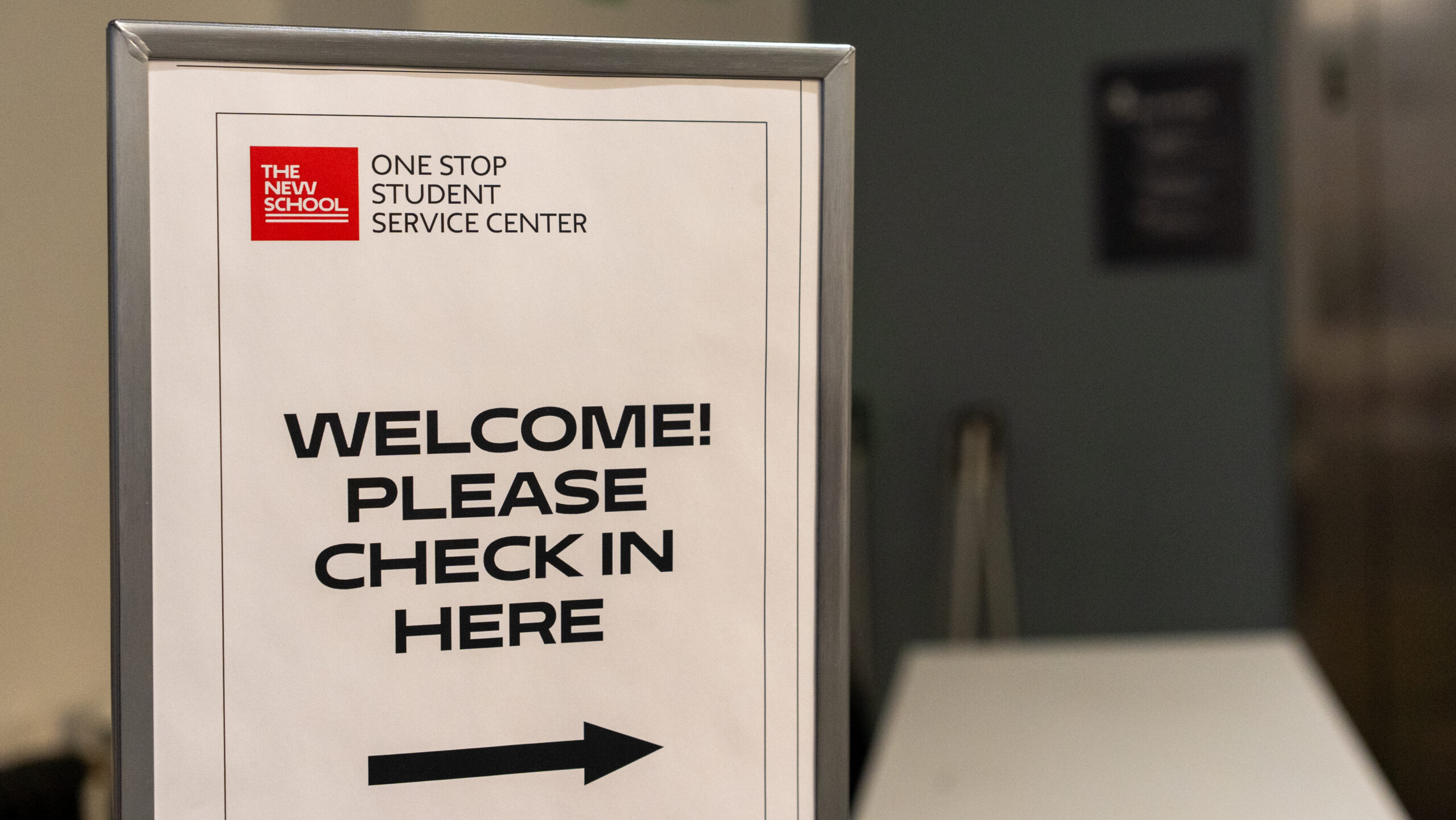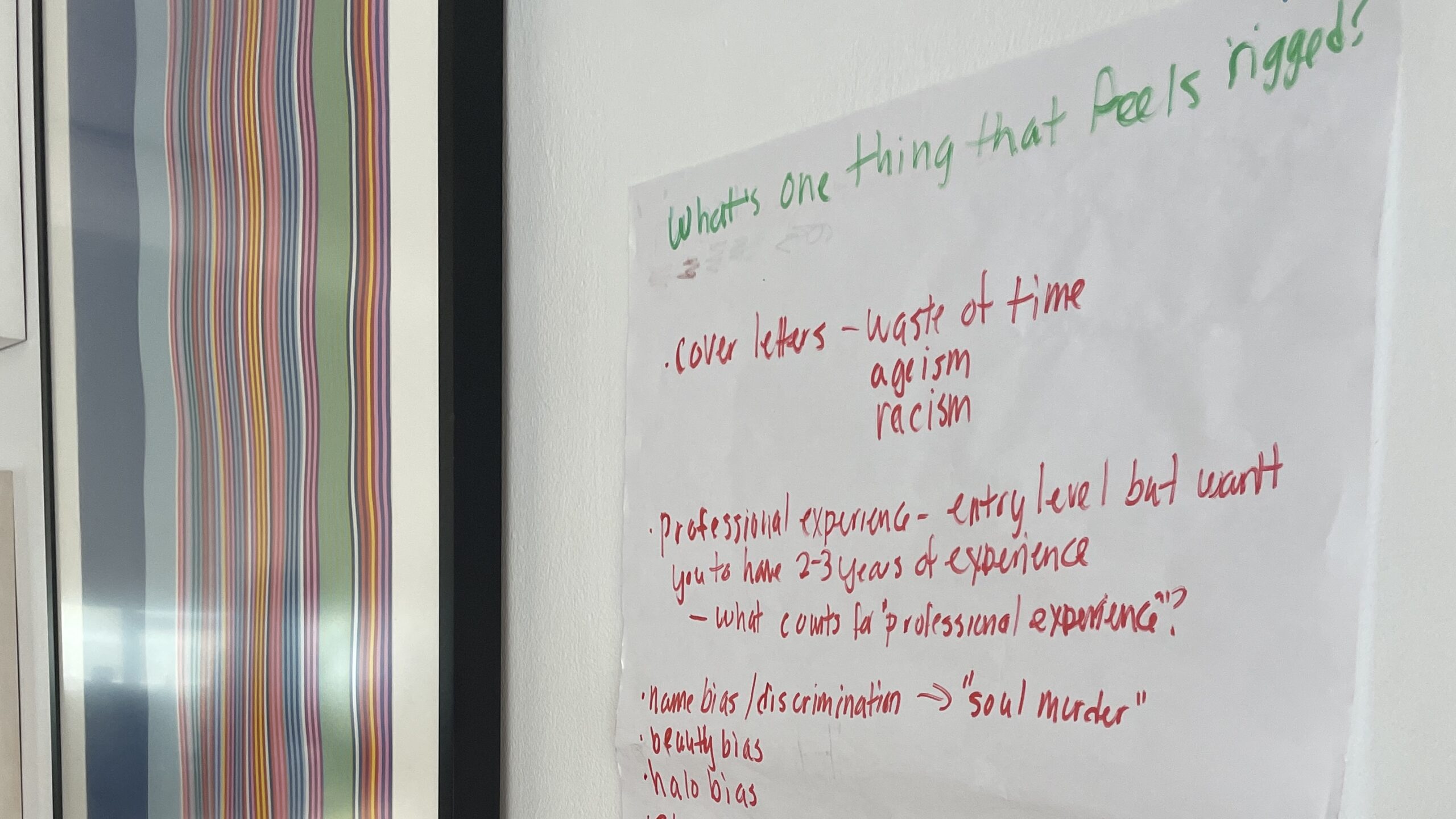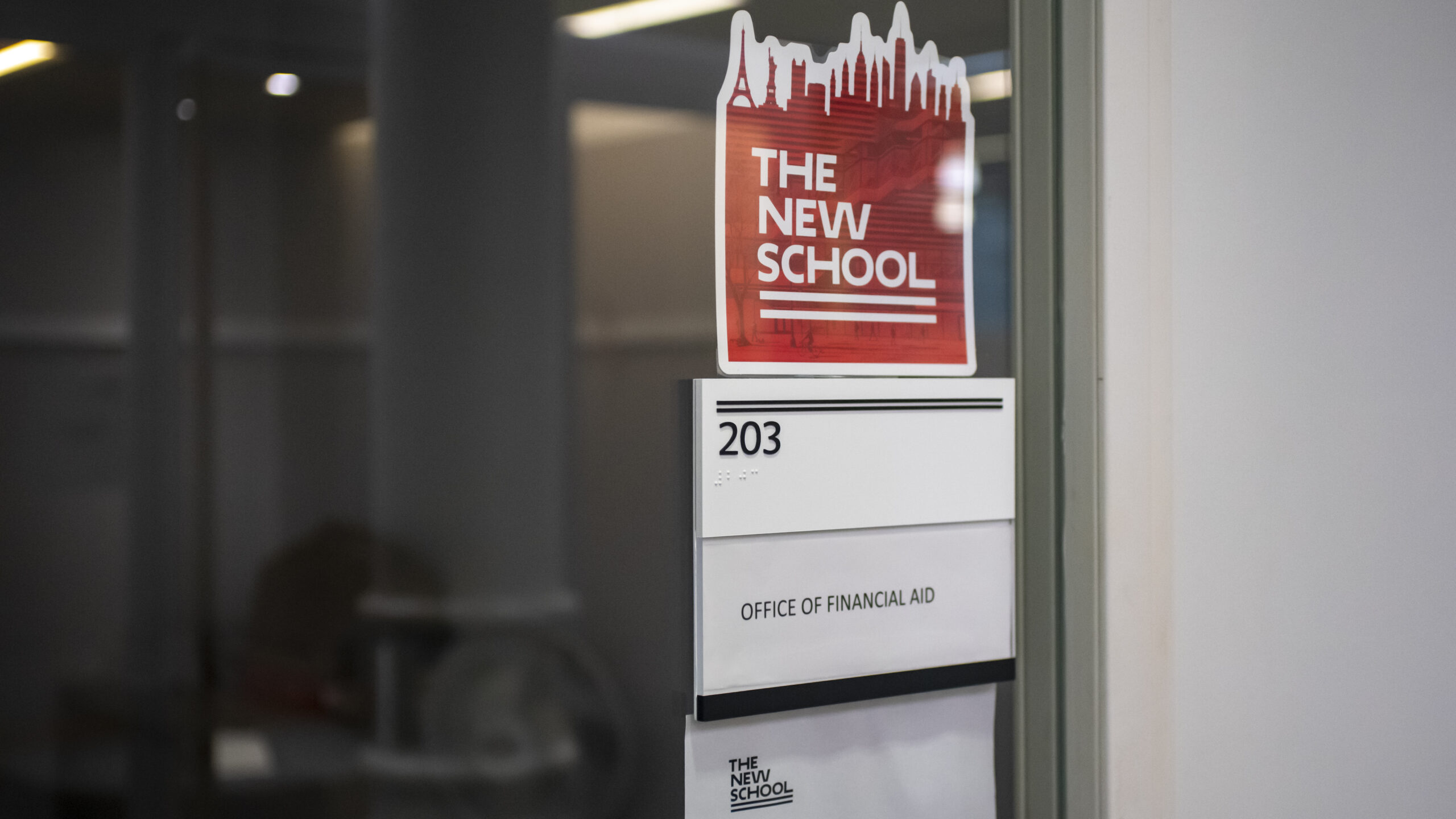Re-publishing to issue a correction
After a long year of remote video classes due to the COVID-19 pandemic, The New School campus is again busy with students and faculty. Many once-remote students have returned to the campus they once called home, others are experiencing it for the first time, and others are meeting face-to-face after only seeing each other through webcams. However, the excitement of being back in person has confused some as to which protocols are set in place if a community member cannot attend class after a positive COVID-19 test.
Currently, there are no University-wide guidelines as to whether or not The New School is offering Zoom options to in-person classes, according to Amy Maslin, the assistant Vice President of Communications and Public Affairs. The University has set guidelines for those who cannot attend in person, like international students who could not obtain student visas or get vaccinated in their home country and students with accommodations through Student Disability Services. However, there have been no set rules for students who cannot attend class due to contracting COVID-19.
According to Maggie Koozer, the Vice Provost for Curriculum and Learning, “Students should stay in close communication with their faculty and be proactive in staying up to date with their classwork. Faculty will take several steps to help ensure students can keep up with class requirements, including informing students in advance of course learning outcomes, teaching goals and individual approaches to teaching and learning.” Koozer states that if students are required to isolate, they must check Canvas for course materials, connect with classmates, and coordinate with faculty.
As the COVID-19 pandemic has not ended, some students are confused about how they would access their classes if they could not attend in person but felt healthy and strong enough to, perhaps, tune in to style over Zoom. Ariana Guerra, a third-year at Eugene Lang and a member of the Student Senate, said she was offered a Zoom link for some of her courses at the beginning of the semester. However, those classes have since stopped offering a Zoom link due to rules set by the Dean’s Office at Eugene Lang. “I’m most afraid for my health, but another reason I’m afraid of getting it [SARS-CoV-2] is that I don’t have time for that. I have too many responsibilities, and I can’t miss out on these things. If there’s no hybrid option, then I’m really going to be missing out,” said Guerra.
Like Guerra, Emily Pavis, a fourth-year Journalism and Design student at Lang, felt a Zoom option to her in-person classes would be helpful. Pavis had to miss two of her classes due to her internship and a family emergency. “I asked if I could Zoom in because I was still available to go to class,” Pavis said, “I just wasn’t going to be there physically. My professor said the Lang administration didn’t want [professors at Lang] to do hybrid classes anymore. Although both of my absences were excused, I just felt like I was getting really behind. If I had had the Zoom option, I would have definitely been able to stay on top of my studies, and it would have made it a lot easier for me to stay connected with the class.”
While some students at The New School were given the option to Zoom into their classes, others were not so lucky. Nicole Collazo Santana, a graduate of Lang’s Journalism and Design department and a first-year Creative Publishing and Critical Journalism student at the New School for Social Research, said that none of her classes offered a Zoom option this semester. “I got an email that someone in my class-tested positive, and I was wondering how are they [student with SARS-COV-2] going to take the class?” Collazo Santana said, “after the email was sent out, someone in my class asked if I could FaceTime them in. I did because I care for my classmates, but that’s not supposed to be on the student,”
There’s confusion among the student body at large, but professors are just as unsure about the correct protocol. Anjali Khosla, a full-time Journalism and Design professor at Lang, shared that she provided students in her courses a Zoom link at the beginning of the semester for those who could not attend class in person. “I wasn’t explicitly teaching a hybrid class. I wasn’t advertising ‘this is a class that you could choose to attend either on Zoom or in-person,’” Khosla said. “The idea was we were supposed to be teaching in person, but that there might be times when students can’t attend in person, and we needed to accommodate that.”
After receiving an email from the Chair of the Journalism and Design department that said the Lang administration was not encouraging in class Zoom, Khosla stopped allowing students to join the live Zoom call but would still record the class and send the lecture to those who needed it. “I completely understand that we’re in uncharted territory and that the University is trying to figure out what the best learning experiences are for students under these circumstances,” Khosla said. After getting feedback from students saying the Zoom option was beneficial to their education, Kholsa reinstated her live Zoom. However, she still believes there needs to be a clear set of guidelines for faculty to follow regarding Zoom-in options. “I wish that the University would just send out a clear statement about this protocol to everybody because I don’t think that it’s particularly fair to faculty to have to be the ones who deliver this information, especially when it’s not being communicated and enforced consistently across departments.”
While faculty are being encouraged to provide maximum flexibility with students regarding their course work, there is no guarantee that a Zoom link will be distributed to students who cannot attend class. “Teaching in the “hyflex model” creates challenges with students’ ability to effectively participate,” said Maggie Koozer, the Vice Provost for Curriculum and Learning. She continued by sharing that it has been “reported particularly with navigating issues around technology to support an effective learning experience.”
The University is encouraging hybrid options or a mix of in-person and asynchronous content. “Hyflex classes,” or courses with a live synchronous meeting component, are not supported for the Fall 2021 semester. If a student does test positive for Covid, they “should stay in close communication with their faculty and be proactive in staying up to date with their classwork,” Koozer said. “Faculty will take a number of steps to help ensure students can keep up with class requirements, including informing students in advance of course learning outcomes, teaching goals and individual approaches to teaching and learning.”
Students and professors interviewed for this story say they want clear and open communication across The New School community to avoid confusion on how to handle classes this semester. “I only know about my little tiny universe,” said Full Time Professor Anjali Khosla, “but I think having clear top-line messaging would be helpful, and we all need to be flexible and accommodating to everyone’s situation.” Additionally, Izzy Best, a part-time Journalism and Design professor at Lang, said that she wants to see “TNS implement a better selection of virtual resources to support classes.”
Many students worry about staying on top of their studies and that not being in person will ultimately hurt their learning experience. “I do think something needs to be in place to support the students. We’re in the middle of a pandemic; students are getting sick. It’s a health crisis. We need to support each other,” said first-year Creative Publishing and Critical Journalism major Collazo Santana. “We don’t need to be making students more stressed out because they got COVID and are scared they’re going to fail their classes because they can’t go to class.”







